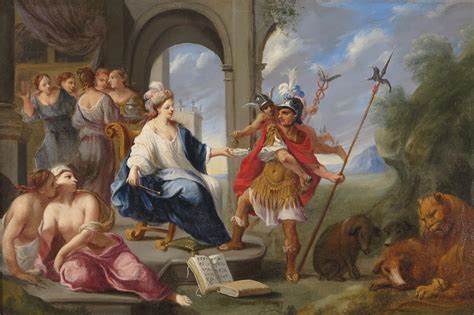hermes giant killer | how did hermes kill hades hermes giant killer Argus Panoptes (Ἄργος Πανόπτης) was the guardian of the heifer-nymph Io and the son of Arestor. According to Asclepiades, . See more To minimise the appearance of surface scratches, limit the exposure to abrasive surfaces. For storage, simply place in the pouch provided at purchase away from dust, moisture, heat, and humidity. Lightly polish with the same pouch for cleaning. Immersing in water or the use of any chemicals may cause irreversible damage.
0 · how did hermes protect himself
1 · how did hermes kill hades
2 · how did hermes get angry
3 · how did hermes catch her
4 · hermes myths 2 general
5 · hermes mythology 2
6 · hermes in the 6th century
7 · apollon hermes
It also includes a number of special features at no extra cost, including parent and child cover, death benefit, rehab support services, fracture cover and £1,500 benefit guarantee. Learn more about Income Protection. Full and Budget Personal Sick Pay.
Argus or Argos Panoptes (Ancient Greek: Ἄργος Πανόπτης, "All-seeing Argos") is a many-eyed giant in Greek mythology. Mythology. Mercury and Argus, by Jacob Jordaens, c. 1620 – Museum of Fine Arts of Lyon. Juno receiving the eyes of Argus from Mercury by Hendrik Goltzius (1615), Museum Boijmans Van . See more
Argus or Argos Panoptes (Ancient Greek: Ἄργος Πανόπτης, "All-seeing Argos") is a many-eyed giant in Greek mythology. See moreArgus, Io and Hermes• Io wearing bovine horns watched over by Argos on Hera's orders, antique fresco from Pompeii• Io . See more1. ^ Apollodorus, 2.1.3; Apollonius of Rhodes, Argonautica 1.112; Ovid Metamorphoses 1.623.2. ^ According to Pausanias, 2.16.3, Arestor was the consort of Mycene, the eponymous nymph of nearby Mycenae, while according to a . See more
Argus Panoptes (Ἄργος Πανόπτης) was the guardian of the heifer-nymph Io and the son of Arestor. According to Asclepiades, . See moreArgus Panoptes is referenced in the scientific names of at least eight animals, each of which bears a pattern of eye spots: reptiles Cnemaspis argus, Eremias argus See more• Ancient Greece portal• Myths portal See more• Warburg Institute Iconographic Database (ca 250 images of Io and Argus) See more
In The Iliad, Hermes is often referred to by the nicknames 'giant-killer,' 'god of luck,' and 'Escort.' Hermes is often depicted with a winged helmet, winged sandals, and/or a .Hermes is an Olympian deity in ancient Greek religion and mythology considered the herald of the gods. He is also widely considered the protector of human heralds, travelers, thieves, merchants, and orators. He is able to move quickly and freely between the worlds of the mortal and the divine aided by his winged sandals. Hermes plays the role of the psychopomp or "soul guide"—a conductor of souls into the afterlife.In the Odyssey, Hermes is referred to as the "giant-killer". Since my research group is doing a class project on him, my teacher said we had to find out why and I can't find it anywhere else. .
ARGOS PANOPTES was a hundred-eyed giant of Argolis in the Peloponnese. Once when Zeus was consorting with the Argive Nymphe Io, his jealous wife Hera appeared on the scene. The .ARGEIPHONTES (Argeiphontês), a surname of Hermes, by which he is designated as the murderer of Argus Panoptes. (Hom. Il. ii 103, and numerous other passages in the Greek and . Hermes killed Argus in order to free the lover of Zeus, Io. Zeus was having an affair with Io behind the back of his wife Hera. Hera learnt of this and so Zeus turned Io into a cow to .Hermes was very mischievous, and within hours of his birth, Hermes was already getting himself into trouble. When he was only one day old, he left his mother’s cave to see the world and ran into a tortoise, which he killed and then .
The herald god is a crosser of boundaries and moves between the mortal world and the immortal realm – both Mt Olympus and the underworld – more than any other god. He is a .
Argus or Argos Panoptes (Ancient Greek: Ἄργος Πανόπτης, "All-seeing Argos") is a many-eyed giant in Greek mythology. Mythology. Mercury and Argus, by Jacob Jordaens, c. 1620 – Museum of Fine Arts of Lyon. Juno receiving the eyes of Argus from Mercury by Hendrik Goltzius (1615), Museum Boijmans Van Beuningen.hermes & the giant typhoeus Typhoeus was a monstrous giant who laid siege to Olympos. All of the gods except for Zeus fled in fear to Egypt and hid themselves in the form of animals. In The Iliad, Hermes is often referred to by the nicknames 'giant-killer,' 'god of luck,' and 'Escort.' Hermes is often depicted with a winged helmet, winged sandals, and/or a scepter or.
how did hermes protect himself
Hermes (/ ˈ h ɜːr m iː z /; ‹See Tfd› Greek: Ἑρμῆς) is an Olympian deity in ancient Greek religion and mythology considered the herald of the gods. He is also widely considered the protector of human heralds, travelers, thieves, [2] merchants, and orators.In the Odyssey, Hermes is referred to as the "giant-killer". Since my research group is doing a class project on him, my teacher said we had to find out why and I can't find it anywhere else. Can anyone here tell me?
ARGOS PANOPTES was a hundred-eyed giant of Argolis in the Peloponnese. Once when Zeus was consorting with the Argive Nymphe Io, his jealous wife Hera appeared on the scene. The god quickly transformed her into a white heifer but the goddess was not deceived and demanded the animal as a gift.
ARGEIPHONTES (Argeiphontês), a surname of Hermes, by which he is designated as the murderer of Argus Panoptes. (Hom. Il. ii 103, and numerous other passages in the Greek and Latin poets.) Hermes killed Argus in order to free the lover of Zeus, Io. Zeus was having an affair with Io behind the back of his wife Hera. Hera learnt of this and so Zeus turned Io into a cow to disguise her.Hermes was very mischievous, and within hours of his birth, Hermes was already getting himself into trouble. When he was only one day old, he left his mother’s cave to see the world and ran into a tortoise, which he killed and then fashioned into an instrument, inventing the lyre.
The herald god is a crosser of boundaries and moves between the mortal world and the immortal realm – both Mt Olympus and the underworld – more than any other god. He is a trickster since birth, a messenger, a traveller, and a trader. He’s also an amoral character, and does whatever he wants to.Argus or Argos Panoptes (Ancient Greek: Ἄργος Πανόπτης, "All-seeing Argos") is a many-eyed giant in Greek mythology. Mythology. Mercury and Argus, by Jacob Jordaens, c. 1620 – Museum of Fine Arts of Lyon. Juno receiving the eyes of Argus from Mercury by Hendrik Goltzius (1615), Museum Boijmans Van Beuningen.hermes & the giant typhoeus Typhoeus was a monstrous giant who laid siege to Olympos. All of the gods except for Zeus fled in fear to Egypt and hid themselves in the form of animals.
In The Iliad, Hermes is often referred to by the nicknames 'giant-killer,' 'god of luck,' and 'Escort.' Hermes is often depicted with a winged helmet, winged sandals, and/or a scepter or.Hermes (/ ˈ h ɜːr m iː z /; ‹See Tfd› Greek: Ἑρμῆς) is an Olympian deity in ancient Greek religion and mythology considered the herald of the gods. He is also widely considered the protector of human heralds, travelers, thieves, [2] merchants, and orators.In the Odyssey, Hermes is referred to as the "giant-killer". Since my research group is doing a class project on him, my teacher said we had to find out why and I can't find it anywhere else. Can anyone here tell me?ARGOS PANOPTES was a hundred-eyed giant of Argolis in the Peloponnese. Once when Zeus was consorting with the Argive Nymphe Io, his jealous wife Hera appeared on the scene. The god quickly transformed her into a white heifer but the goddess was not deceived and demanded the animal as a gift.
ARGEIPHONTES (Argeiphontês), a surname of Hermes, by which he is designated as the murderer of Argus Panoptes. (Hom. Il. ii 103, and numerous other passages in the Greek and Latin poets.)
how did hermes kill hades
goyard bag tradesy
Hermes killed Argus in order to free the lover of Zeus, Io. Zeus was having an affair with Io behind the back of his wife Hera. Hera learnt of this and so Zeus turned Io into a cow to disguise her.
Hermes was very mischievous, and within hours of his birth, Hermes was already getting himself into trouble. When he was only one day old, he left his mother’s cave to see the world and ran into a tortoise, which he killed and then fashioned into an instrument, inventing the lyre.

goyard artois monogramming cost

how did hermes get angry
Enjoy express shipping & free returns when you shop pre-owned Louis Vuitton on FARFETCH today. Find iconic vintage monogram bags, wallets & belts now.
hermes giant killer|how did hermes kill hades


























